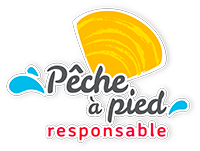
Glossary
This is the professional body of the French sea fishing and aquaculture industry. It represents and promotes the general interests of fishermen before national and European government. It participates in the management of fishing resources within a framework of responsible fishing and sustainable development. This professional body is structured around a national committee and regional, departmental and interdepartmental committees.
A collective foodborne illness is defined as the appearance of at least two similar cases with symptoms – usually of a gastrointestinal nature which can be linked with the same food origin. Collective foodborne illnesses are required to be reported to the health authorities. A collective foodborne illness is generally connected with the use of contaminated raw materials, non-compliance with hygiene measures, a break in the cold chain during food preparation, or the direct consumption of contaminated food (such as shellfish for example).
Collective sanitation refers to a sanitation system in which wastewater is collected and sent to a wastewater treatment plant in a collective manner. A collective sanitation system includes all wastewater treatment facilities (i.e. the sewerage treatment plant and pumping stations) and transportation infrastructure (i.e. sewerage collection systems).
These are coastal areas which are used for commercial shellfish farming or shellfish gathering purposes. In application of EU regulations, commercial production zones are subject to sanitary monitoring and classification for each group of shells farmed or fished in the area: Group 1 (gastropods: periwinkles, whelks, etc.); Group 2 (burrowing bivalves: cockles, clams, etc.) and Group 3 (non-burrowing bivalves: oysters, mussels). Production zones may be classified into three categories:
- Category A: Shellfish can be released for consumption directly after harvest
- Category B: Shellfish must undergo purification or relaying before being released for consumption
- Category C: Shellfish must undergo extended relaying or a heat treatment before being released for consumption.
This term refers to the farming of all types of shellfish for commercial purposes. The most common types of shellfish farming are oyster farming, mussel farming, clam farming and cockle farming.
